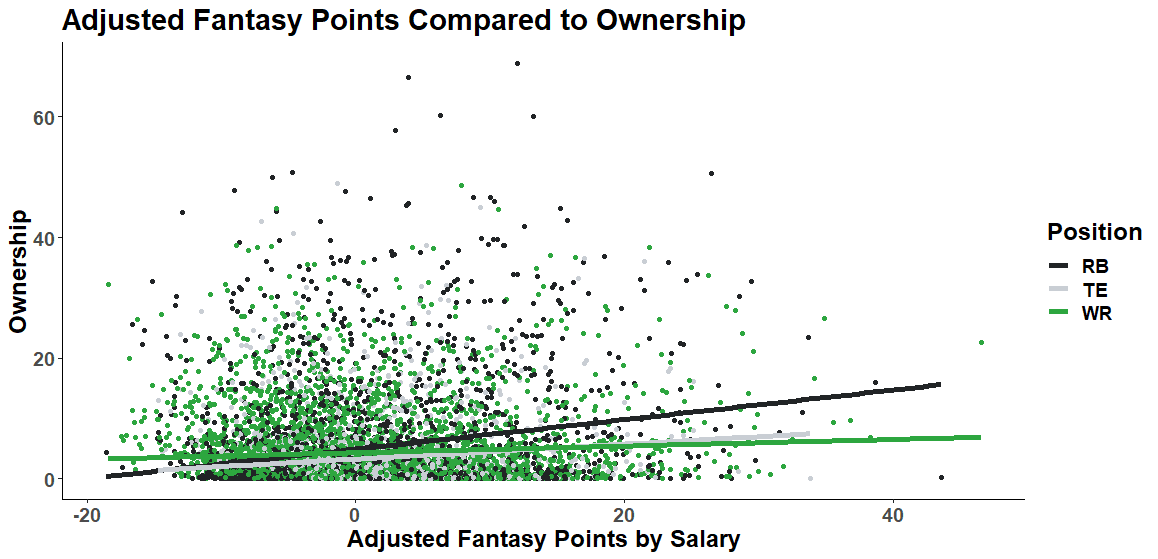The wide receiver position separates those who are profitable playing daily fantasy sports from those who struggle to construct winning rosters. Running backs are the easier position to predict, and quarterbacks matter the least with their range of distributed outcomes much closer than at other positions. To be successful at DFS, one must figure out a repeatable process to pick and choose wide receivers correctly. Let’s dive into some historical data to help guide a framework for evaluating and choosing the right wide receivers to roster each week in DFS.
Subscribe to PFF's EDGE or ELITE subscriptions to get access to the following tools, charts, etc.
– All Premium Article Content
– Fantasy Football Rankings & Projections
– Fantasy Football Draft Guide, Cheat Sheets & Advanced Stats
– Fantasy Football Mock Draft Tool (DraftMaster)
– Fantasy Football Strength of Schedule Matrix
– NFL Player Grades
– NFL Premium Stats
HISTORICAL DATA
The first thing to notice when looking at past performances for wide receivers is how volatile the position is. When we adjust fantasy point performance by salary and compare to ownership, we see that, for the most part, busts at running back and tight end see less ownership than busts at wide receiver. In contrast, the blow-up performances at wide receiver see significantly less ownership than those at running back. The graph below highlights how random the performance of wide receivers has been when compared to ownership. This is the money-making opportunity, as it seems like the market hasn’t fully developed to consistently and accurately predict wide receiver performance in a given week.

This is why models become widely popular when they show some ability to forecast breakout performance at the wide receiver position. An example of this is the Air Yards Buy-Low Model, which has shown over time to consistently unearth wide receivers who would typically fly under the radar but are poised for a breakout performance in a subsequent week. Let’s take a closer look at salary and flex usage trends before diving into which stats are most (or least) helpful when evaluating wide receivers.
Exclusive content for premium subscribers

WANT TO KEEP READING?
Dominate Fantasy Football & Betting with AI-Powered Data & Tools Trusted By All 32 Teams
Already have a subscription? Log in



 © 2025 PFF - all rights reserved.
© 2025 PFF - all rights reserved.